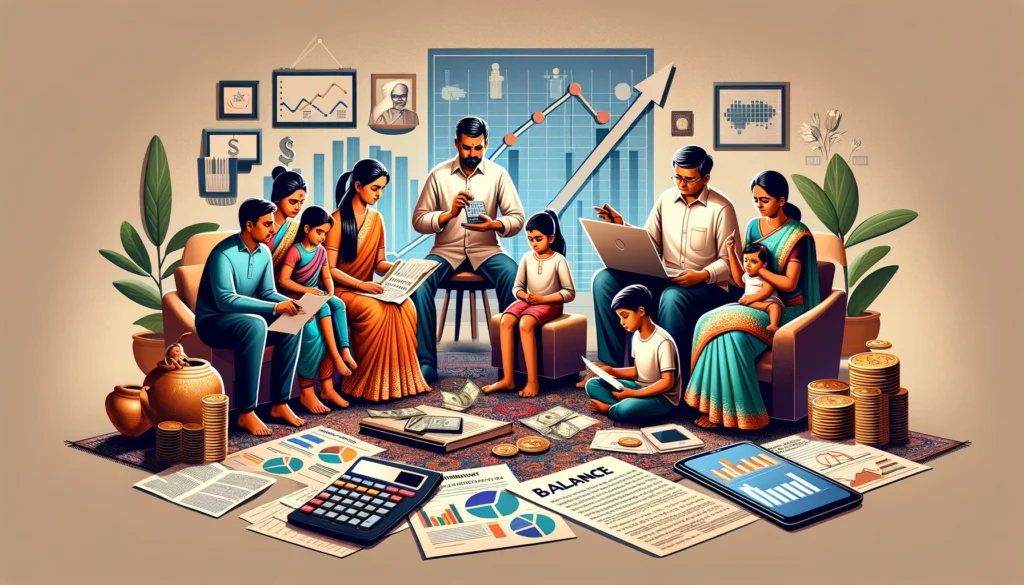Imagine a bustling Indian market where buyers and sellers haggle over prices, striving to strike a deal. This scenario, a microcosm of the Indian economy, illustrates the concept of Market Equilibrium—a state where supply meets demand, creating a balance that affects everyone from street vendors to corporate moguls. But why should the average person care about this economic principle? Let’s delve into the world of Market Equilibrium to uncover its impact on the Indian economy and the common man.
Understanding Market Equilibrium
At its core, Market Equilibrium is where the quantity of goods supplied equals the quantity demanded, resulting in stable prices. It’s like a seesaw in the playground, where both sides are perfectly balanced. In India, with its diverse economy, Market Equilibrium plays a crucial role in sectors such as agriculture, manufacturing, and services, ensuring that prices don’t skyrocket or plummet unpredictably.

Market Equilibrium in Action in India
In the Indian context, consider the agriculture sector. Farmers produce crops, and based on the harvest, prices are set in the market. If there’s a bumper crop, prices may fall (excess supply), but if the crop fails, prices soar (reduced supply). Similarly, in real estate, equilibrium affects housing prices based on demand and construction rates. For commuters, the balance between the availability of transport services and the number of passengers dictates fare rates. These everyday examples show how Market Equilibrium influences pricing and availability in different sectors, directly impacting the common man’s life.
Impact on the Common Man
The effects of Market Equilibrium are felt daily by the average Indian. It determines the cost of living, affecting how much you pay for food, housing, and transport. A balanced market ensures affordable prices and steady availability of goods and services. However, when the equilibrium is disturbed—say, by a sudden increase in fuel prices—it can lead to higher transportation costs, affecting everything from your daily commute to the price of goods in the market.
Why Should You Care?
Understanding Market Equilibrium offers insights into the economic forces that shape our lives. It helps in making informed decisions, be it in choosing cost-effective transport options, buying property, or even selecting the right time to shop for groceries. Being aware of these dynamics can lead to better personal financial management and contribute to a more balanced and fair society, where resources are allocated efficiently, and economic stability is maintained.

Conclusion
Market Equilibrium is not just an abstract economic concept; it’s a fundamental principle that underpins the functioning of the Indian economy, affecting everything from the macroeconomic landscape to the microeconomic realities of daily life. By understanding how Market Equilibrium works and its implications, we can better navigate the complexities of the economy, leading to more informed choices and a better understanding of the market forces that impact our lives. So, the next time you’re out shopping or investing in property, think about the invisible hand of Market Equilibrium at play, guiding the economic harmony of supply and demand in India.
Author’s Note
This blog seeks to demystify the concept of Market Equilibrium and its significance in the Indian economic landscape, highlighting its pervasive impact on the common man. The aim is to provide a clearer understanding of economic principles in a way that resonates with everyday experiences.
G.C., Ecosociosphere contributor.
References and Further Reading
- “The Wealth of Nations” by Adam Smith – A foundational text that introduces key economic principles including market forces and equilibrium.
- “Basic Economics” by Thomas Sowell – Offers clear explanations of complex economic concepts, including market equilibrium and its global implications.
- “Poor Economics” by Abhijit V. Banerjee and Esther Duflo – Provides insights into the economic lives of the poor in India and how market forces affect their daily living.




